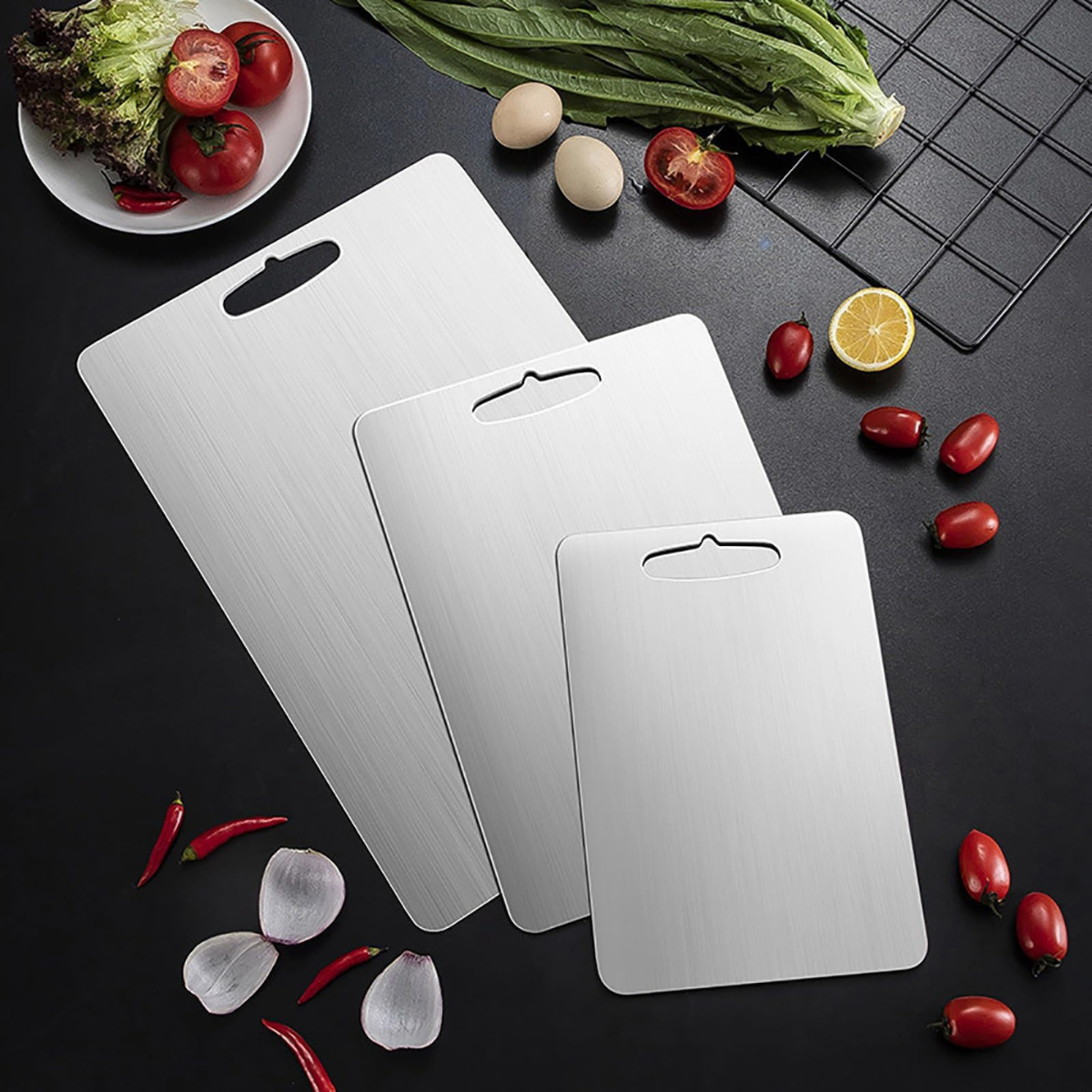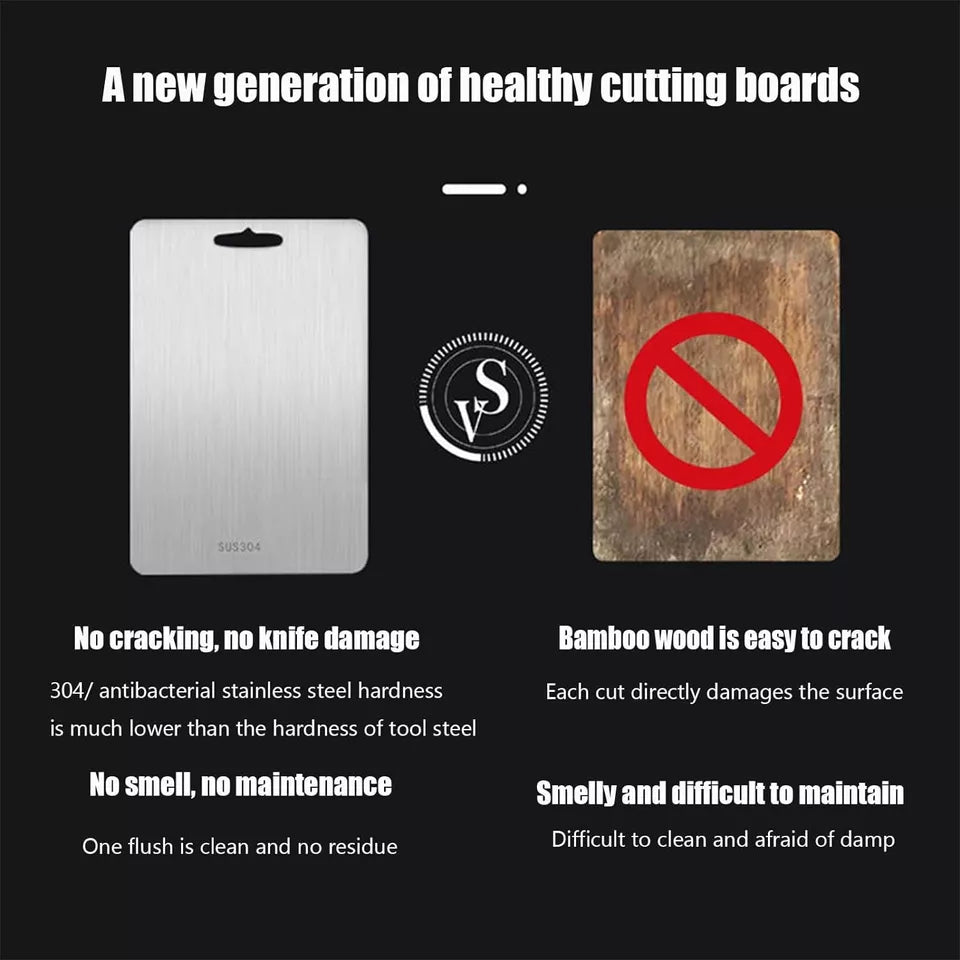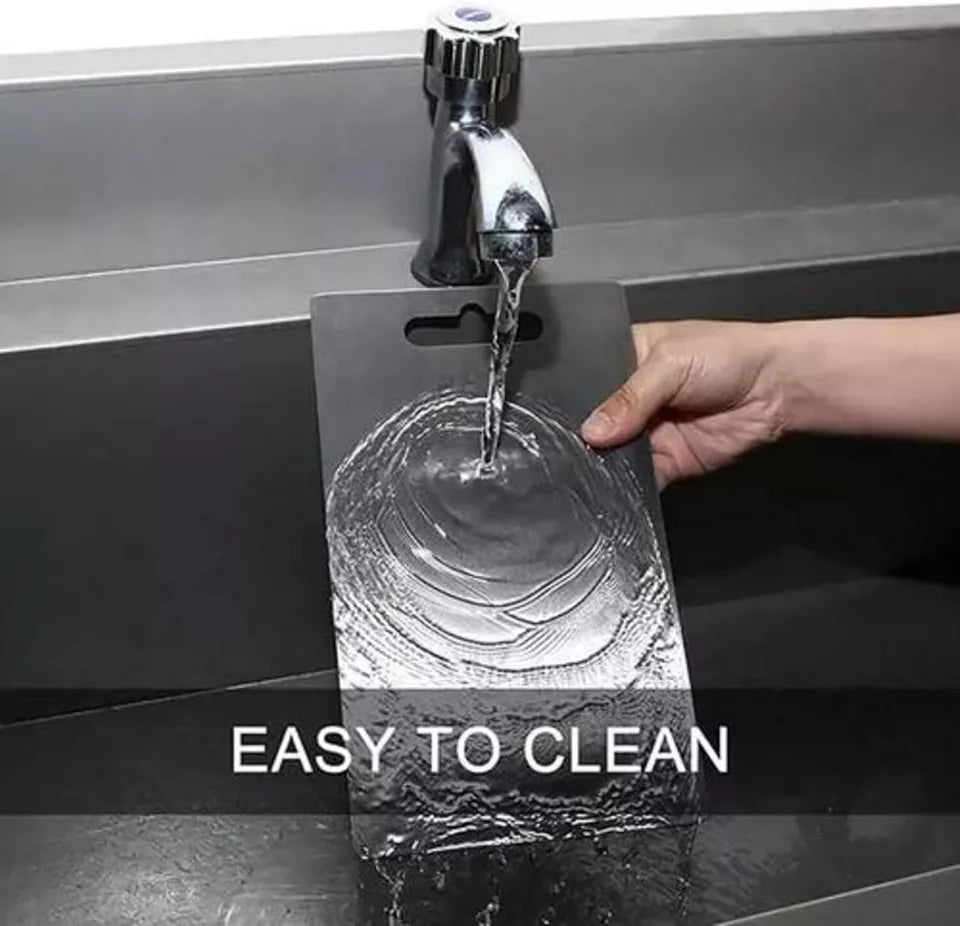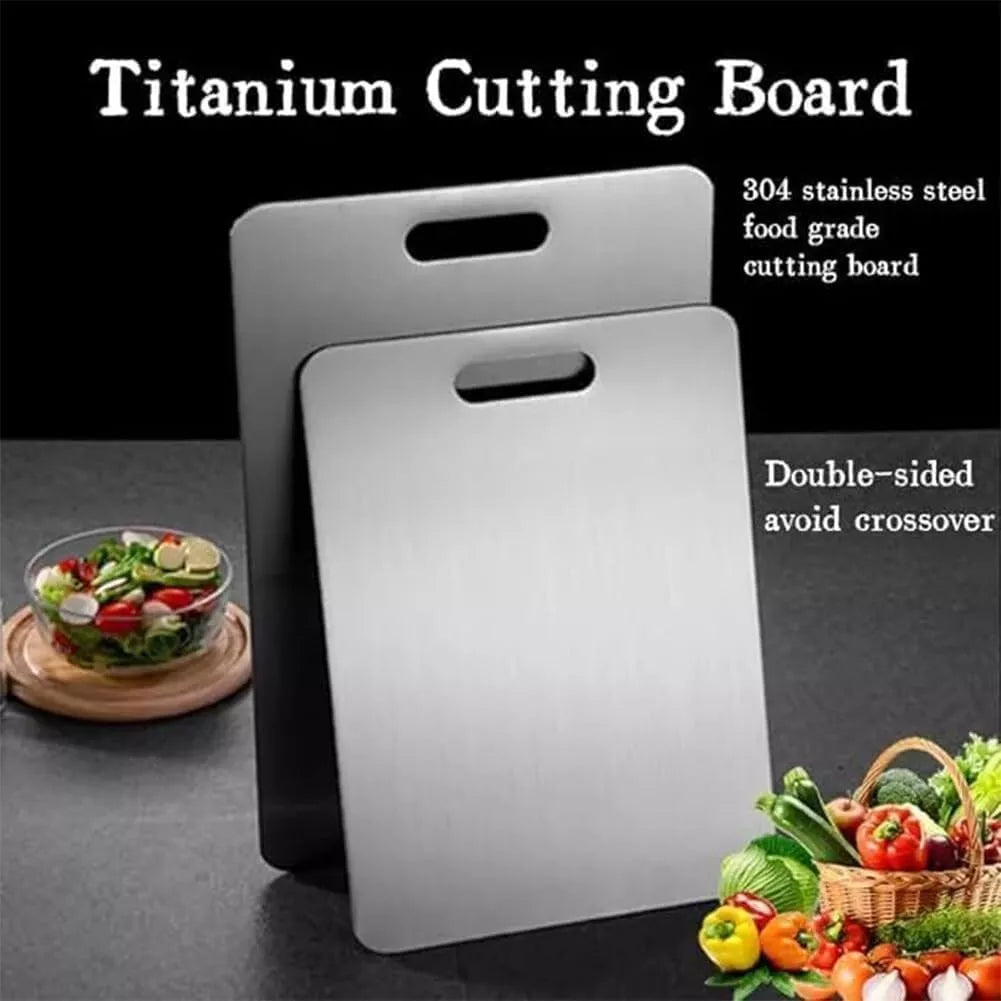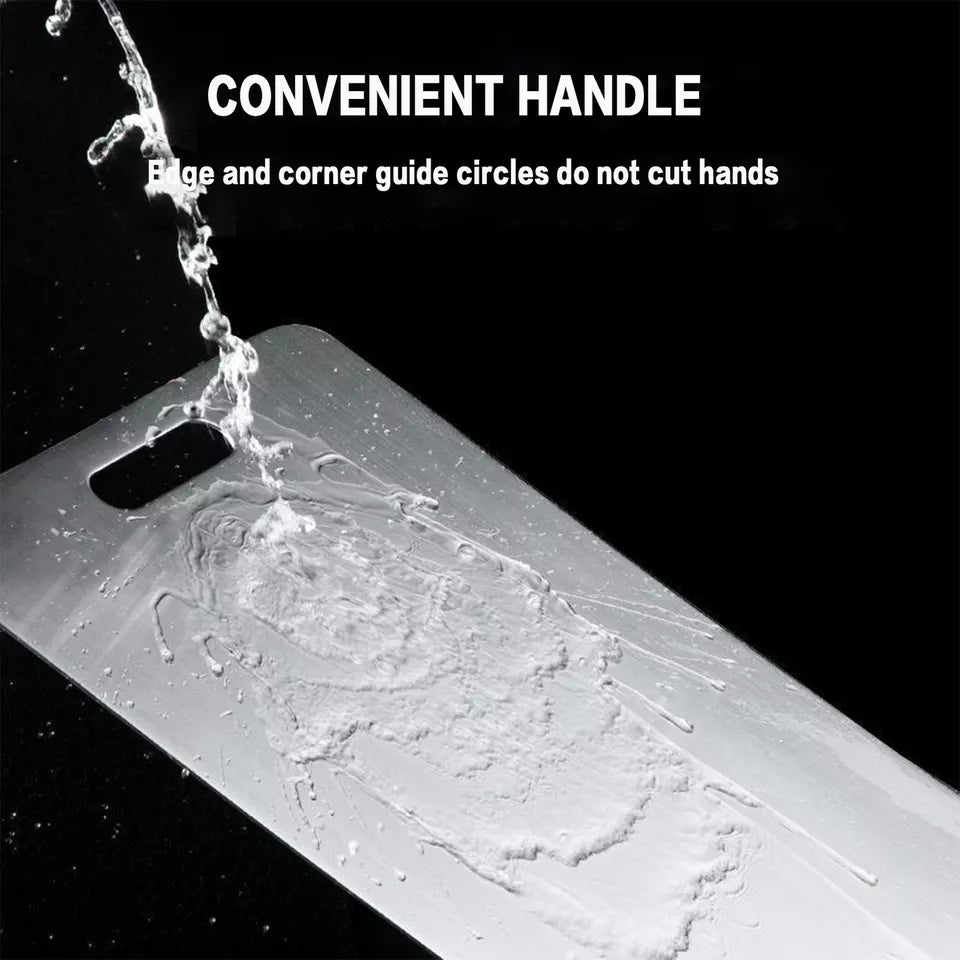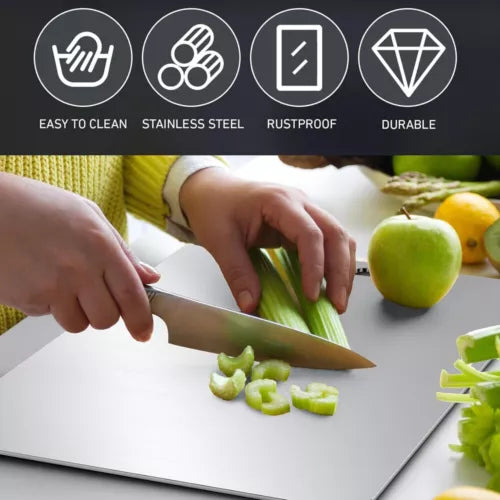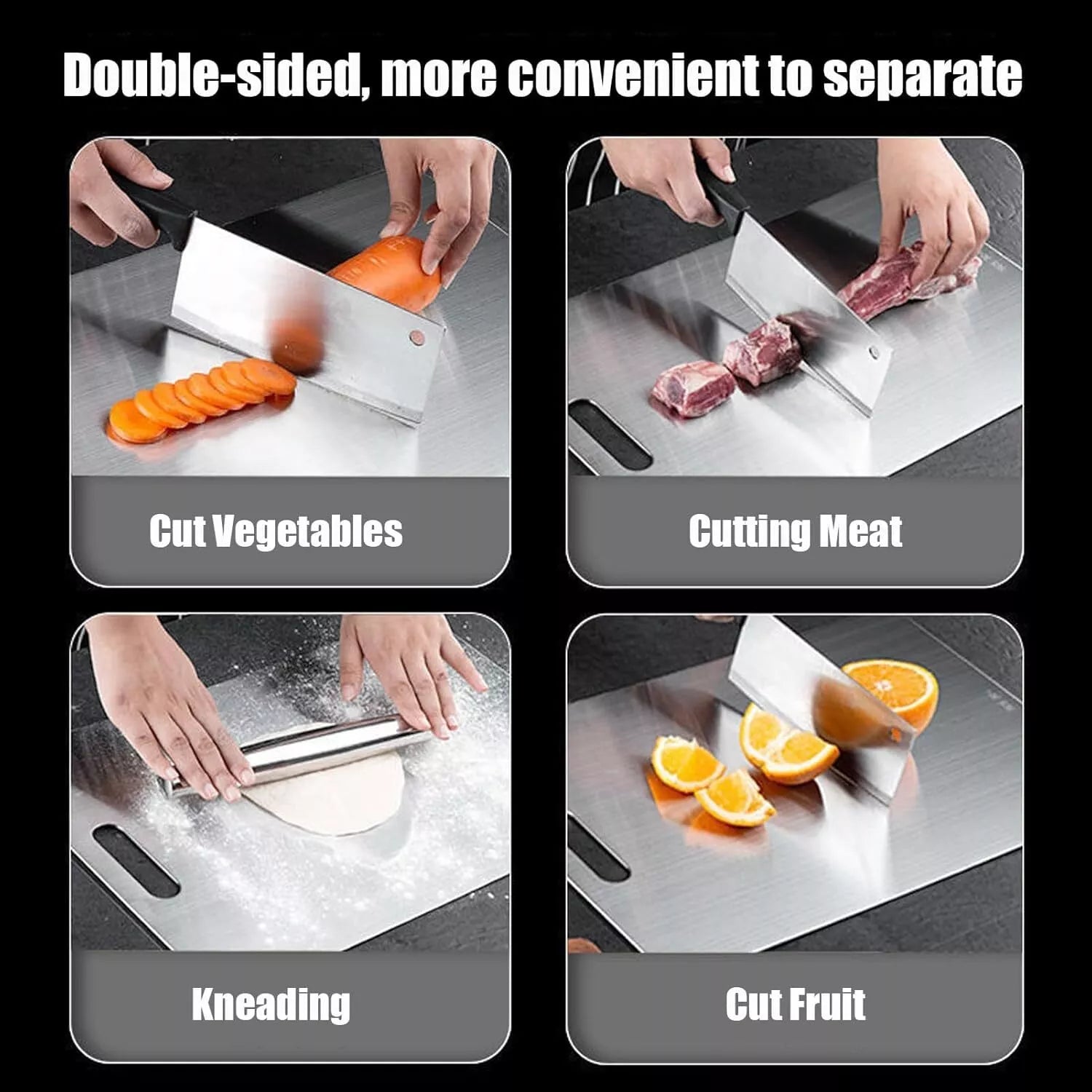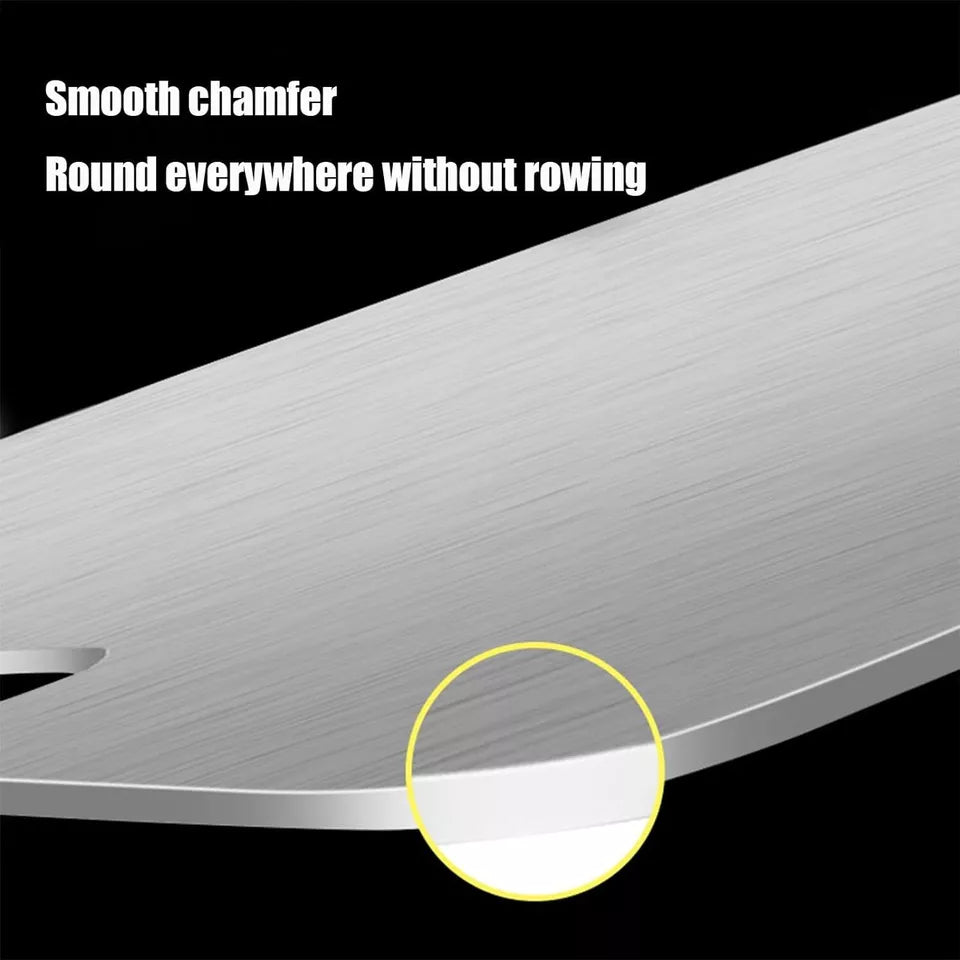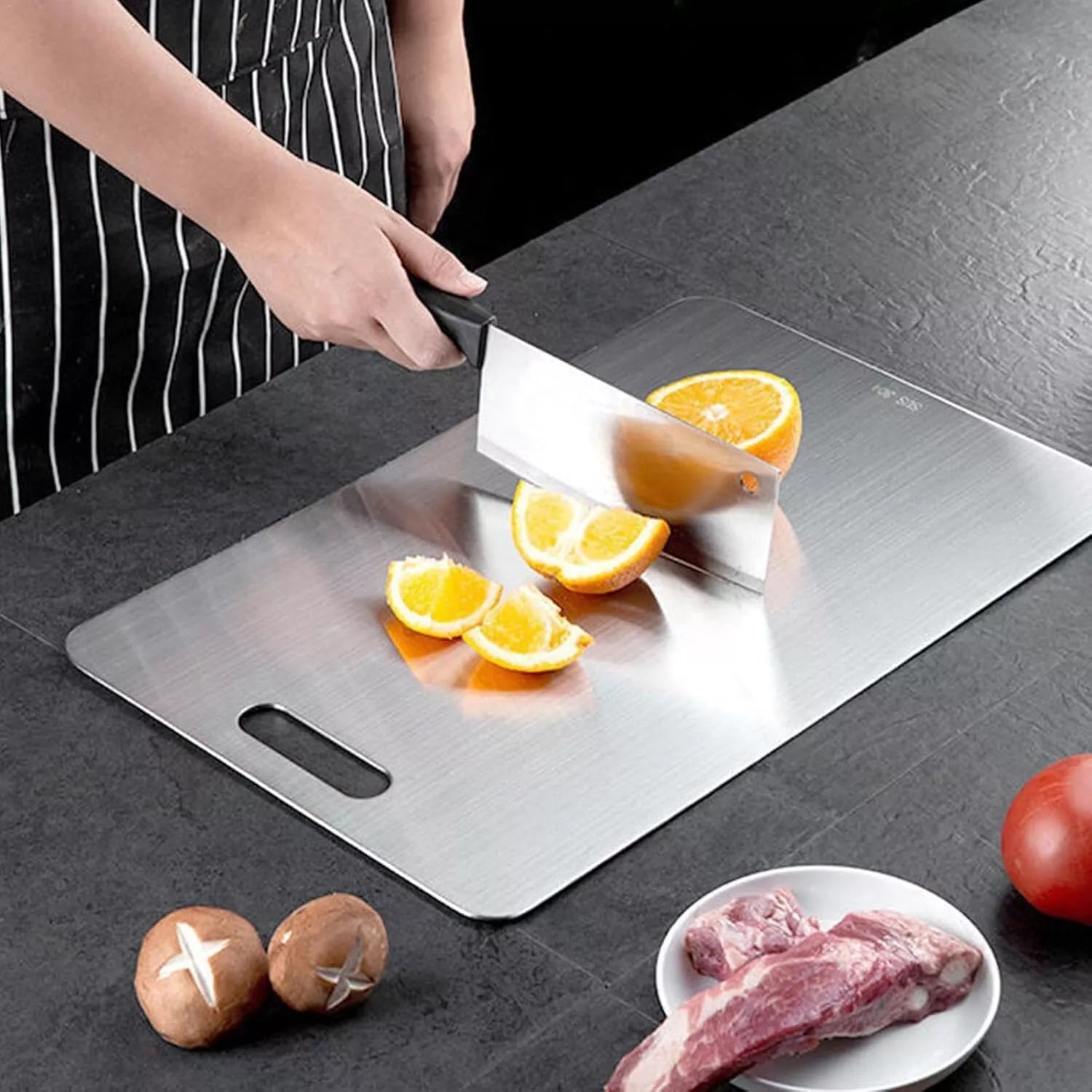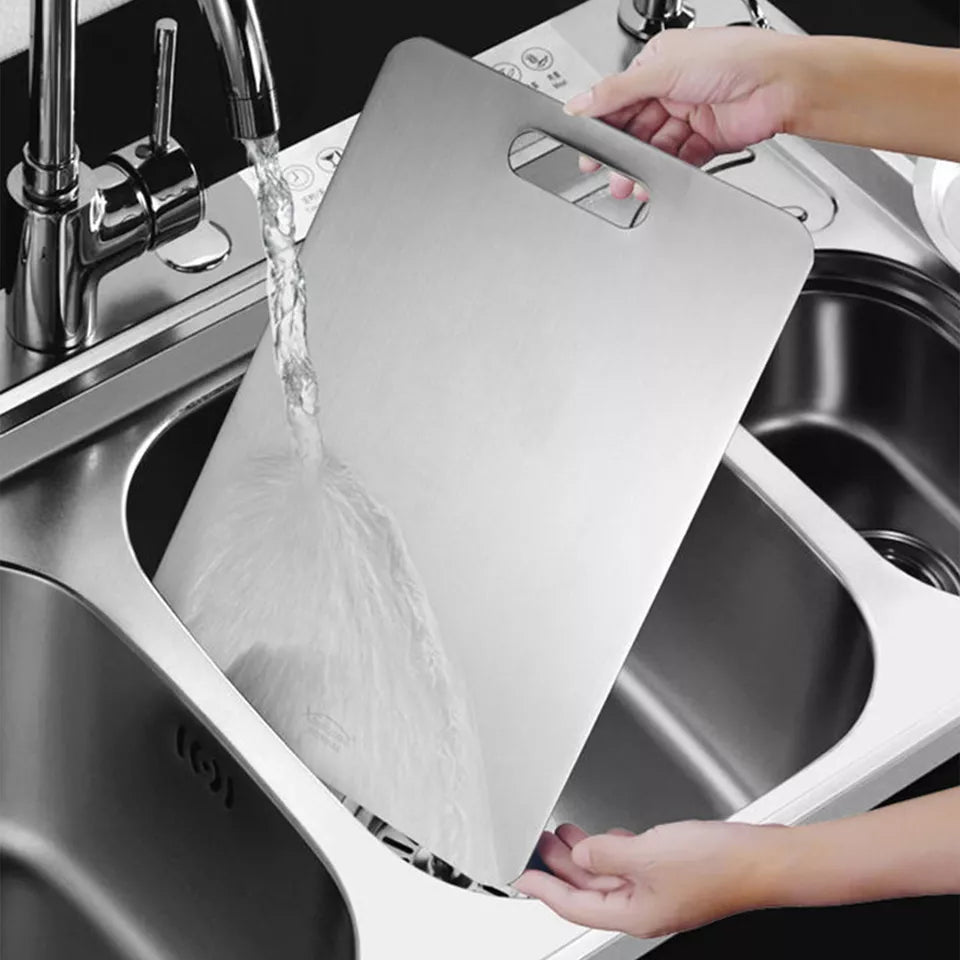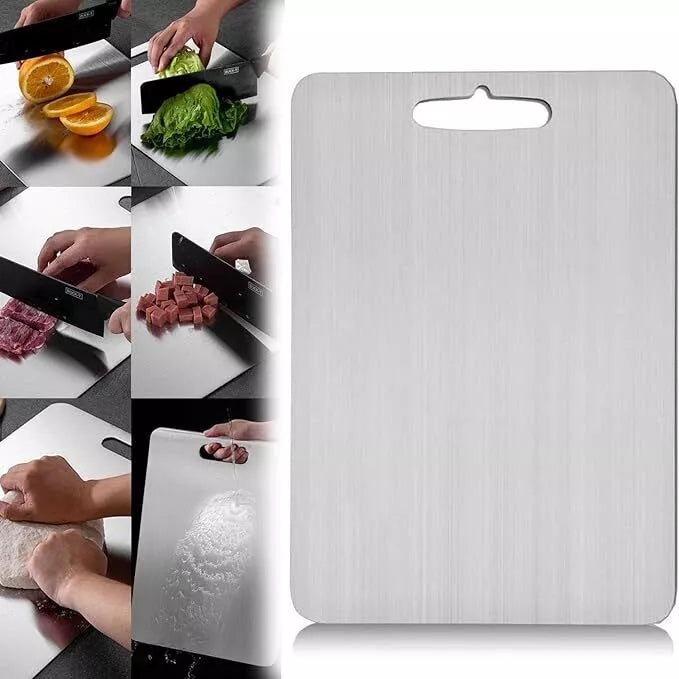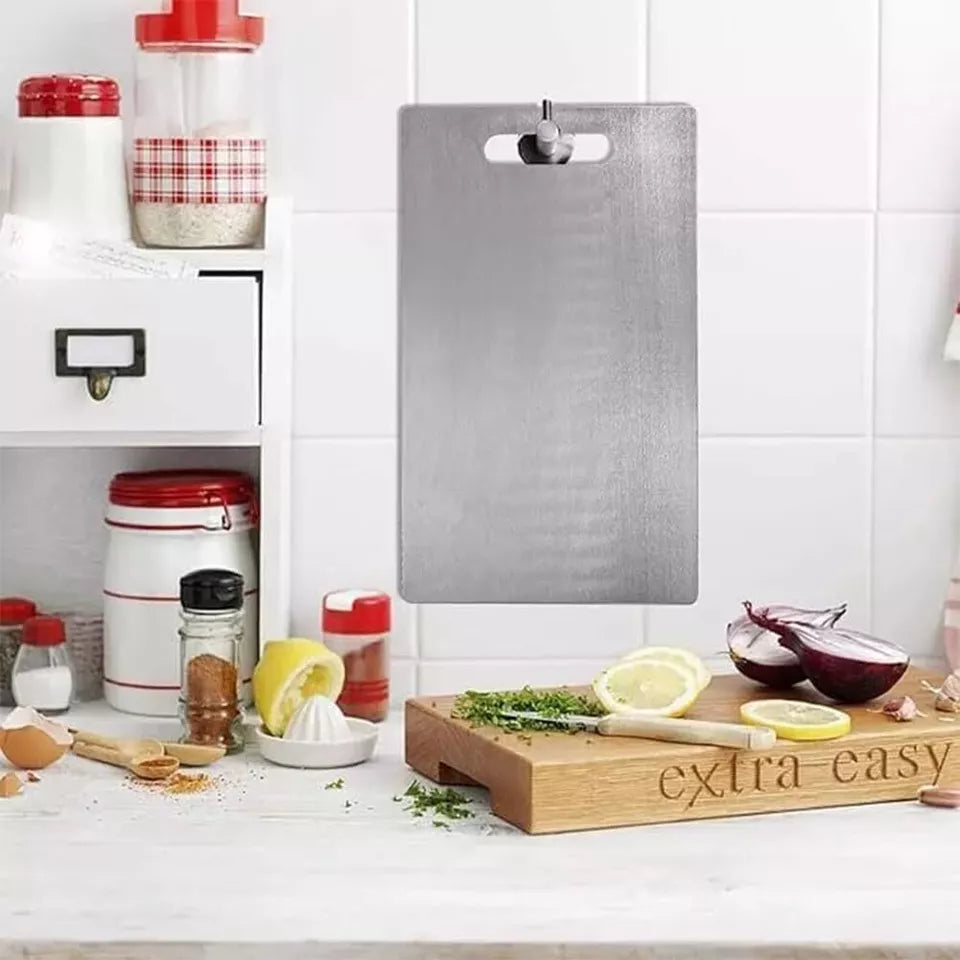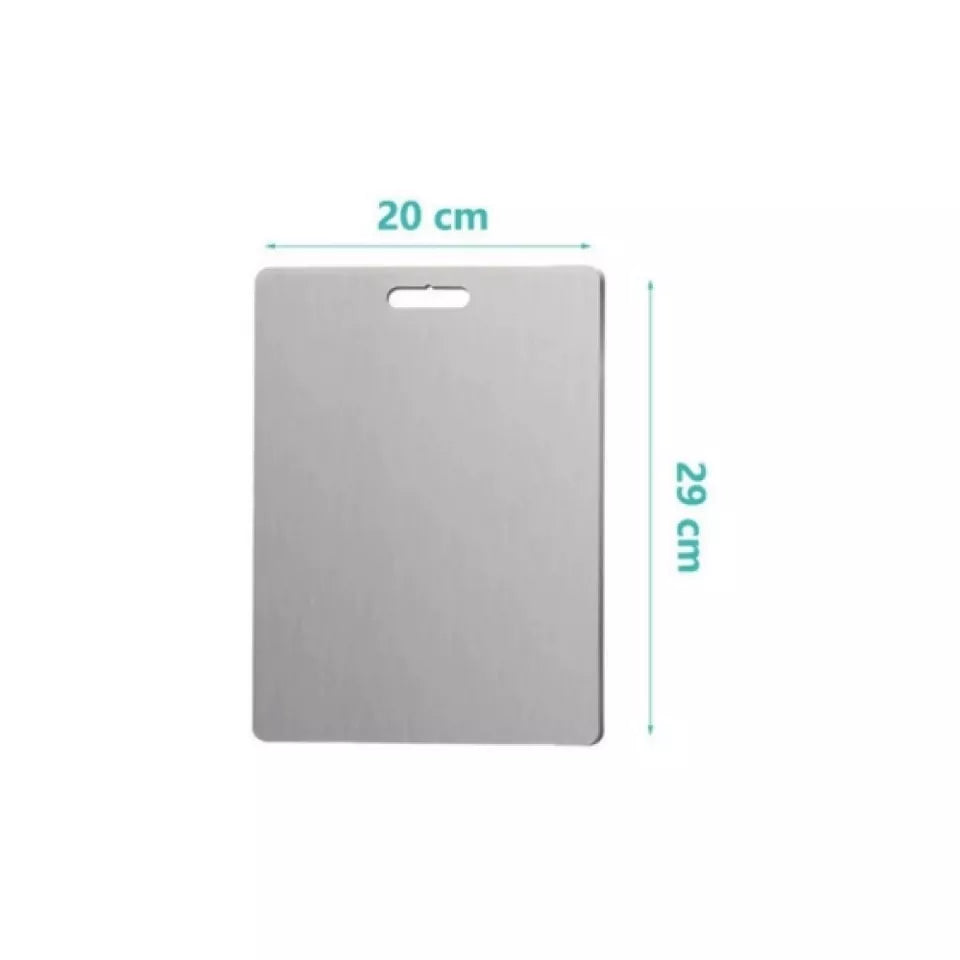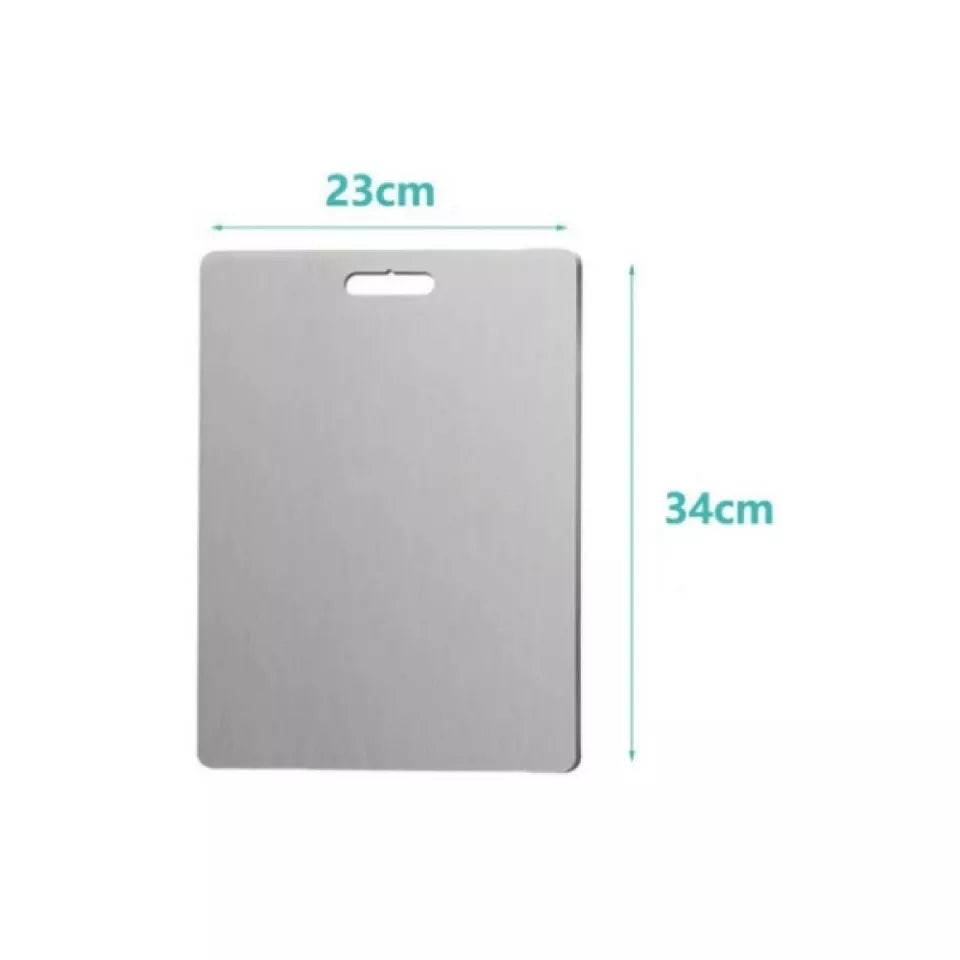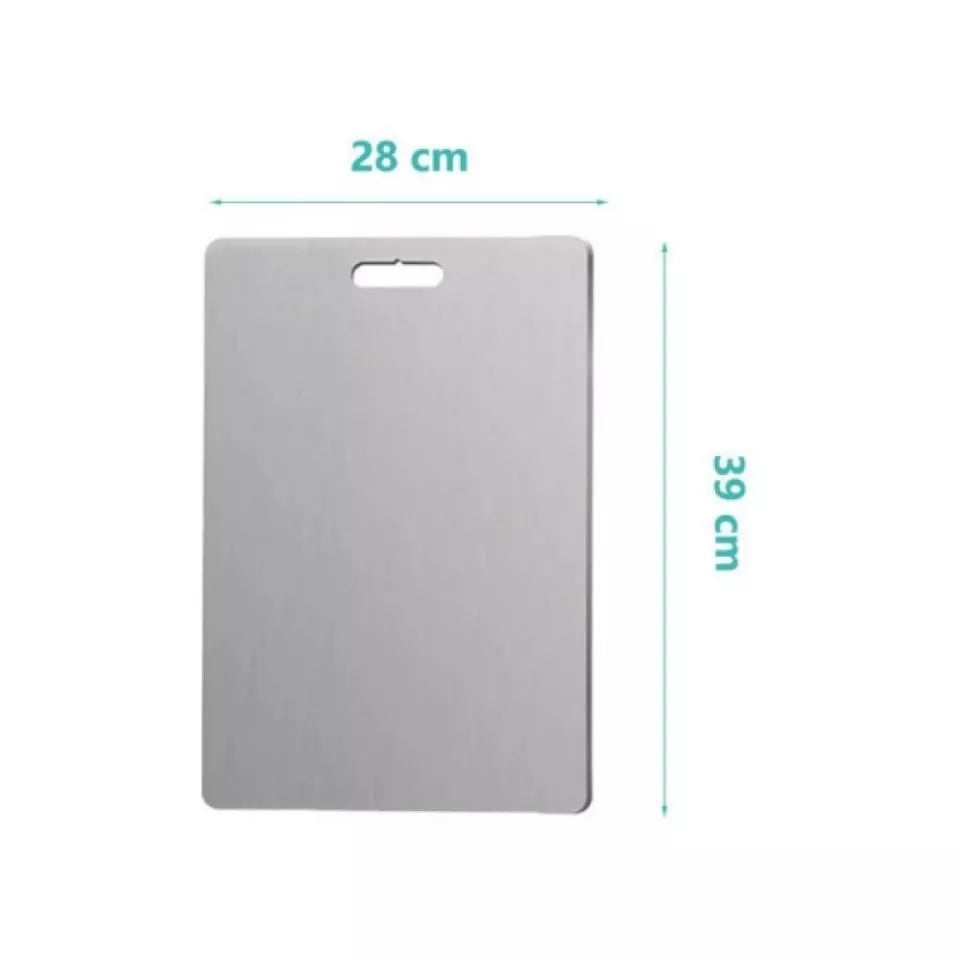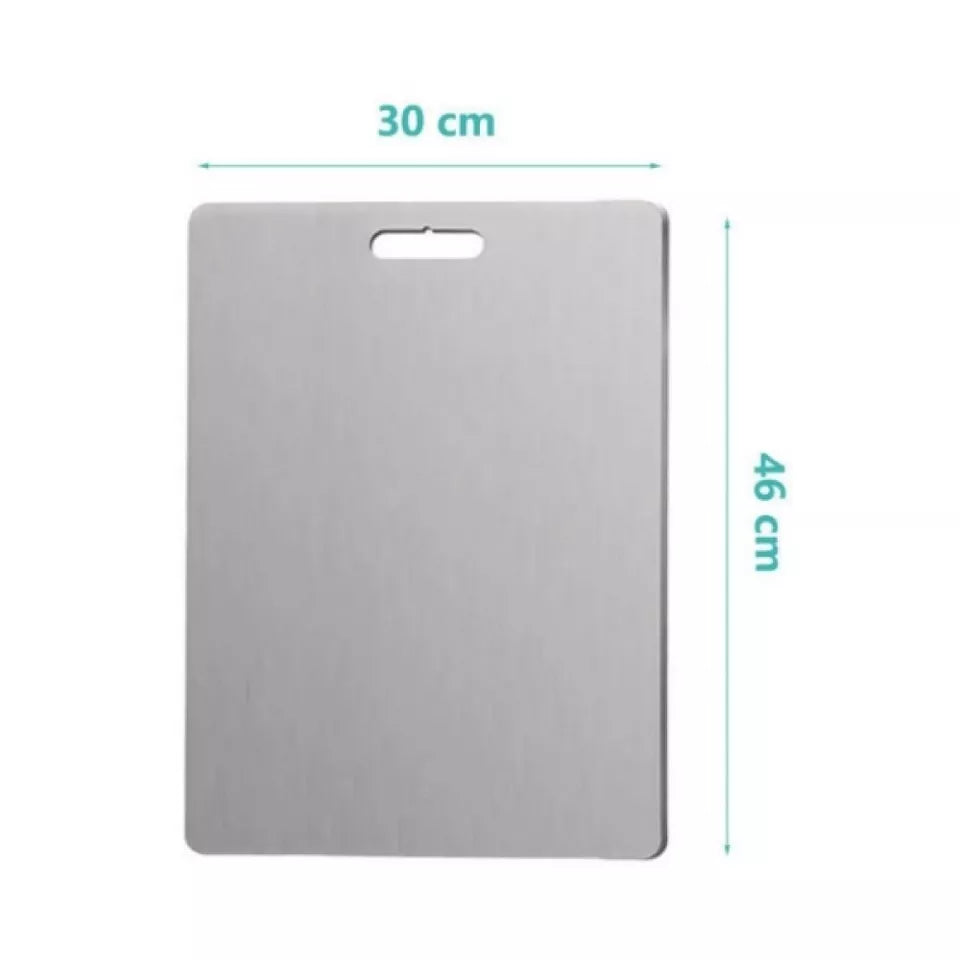Titanium or Stainless Steel Chopping Boards? A Comprehensive Guide to Making the Right Choice
Which is better: titanium or stainless steel chopping boards in Australia?Titanium chopping boards are lighter, more knife-friendly, and highly hygienic—ideal for Aussie kitchens. Stainless steel offers unmatched durability and easy cleaning. Both have pros and cons, so choose based on your cooking style and priorities.
Choosing between titanium and stainless steel chopping boards requires careful consideration of durability, knife impact, hygiene, and maintenance. Titanium boards are praised for their lightweight nature, heat resistance, and gentleness on knives, but they can be costly and harder to find. Stainless steel boards offer durability and easy cleaning but may dull knives faster and are less heat resistant. Understanding the pros and cons of each material will help you make an informed decision suited to your cooking style and kitchen needs.
Deciding between titanium and stainless steel chopping boards involves evaluating factors like durability, maintenance, and how they impact knives. This guide will navigate through the essential aspects, ensuring one makes an informed decision tailored to their cooking needs and preferences. With both materials offering distinct advantages and challenges, understanding their properties is key to choosing a board that isn't just functional but also aesthetically pleasing and aligns with one's culinary practices.
Introduction to Chopping Board Materials
While wood or plastic have traditionally dominated the chopping board market, stainless steel cutting boards are emerging as a popular choice due to their durability and hygienic surface. Unlike wooden cutting boards, which can harbor bacteria and require careful maintenance to preserve their natural antimicrobial properties, stainless steel is resistant to stains, doesn't trap bacteria, and is easy to clean. However, it can be harsh on knives and prone to deep scratches. This makes the choice of material critical, depending on one's priorities, be it hygiene, knife care, or aesthetics.
Understanding the Basics of Titanium and Stainless Steel
Both titanium and stainless steel are celebrated for their aesthetic appeal, fitting seamlessly into the modern kitchen's design. Yet, their benefits extend beyond just being aesthetically pleasing. This foundation sets the stage for a deeper dive into the unique characteristics of each material, guiding users towards a chopping board that meets their specific culinary requirements.
Pros of Titanium
Titanium chopping boards offer unmatched durability, resisting wear and tear over time. They are incredibly hygienic, thanks to their non-porous nature, preventing bacteria and odors from seeping into the board. Lightweight yet strong, they are easy to handle, making food preparation tasks less cumbersome. Additionally, their heat-resistant properties allow them to double as trivets, showcasing their versatility in the kitchen. Most importantly, they are gentle on knife edges, preserving the sharpness and extending the lifespan of kitchen knives.
Cons of Titanium
Despite their many advantages, Terra Wellness titanium chopping boards come with a higher price tag compared to their stainless steel counterparts, making them a significant investment. The surface texture of titanium boards can pose challenges, potentially requiring more effort to clean thoroughly. Additionally, they may produce more noise when in use, which could be a drawback for some users. Their limited availability in the market might also make it difficult to find the perfect board for one's kitchen. Furthermore, specific maintenance requirements must be adhered to, ensuring the board's longevity and performance.

The Evolution of Cutting Boards in Modern Kitchens
The journey of cutting boards in our kitchens has seen a remarkable evolution, transitioning from traditional wooden cutting boards, known for their natural antimicrobial properties but prone to harbor bacteria and dull knives, to modern alternatives like glass cutting boards that are easy to clean but can quickly blunt your knives. This progression reflects a growing awareness and demand for materials that combine hygiene, durability, and knife care, paving the way for the introduction of titanium and stainless steel options in the culinary world.
Unveiling the Pros of Titanium Cutting Boards
Exploring the benefits of titanium cutting boards reveals why they're becoming a favored choice among culinary professionals and home cooks alike.
1. Unmatched Durability and Longevity
Titanium cutting boards stand out for their incredible strength and resistance to wear and tear. Unlike wood or plastic that can easily succumb to deep scratches and damage, titanium ensures a lasting surface that withstands the rigors of daily use, making it a smart investment for any kitchen.
2. Exceptional Hygiene Features
When it comes to maintaining a clean cooking environment, titanium cutting boards offer exceptional hygiene features. Their non-porous surface is resistant to stains and doesn't trap bacteria, unlike some other materials. This makes them an ideal choice for those questioning, "Are Titanium Cutting Boards Healthy?" as they provide a safe surface for food preparation.
3. Lightweight Nature for Easy Handling
Despite their strength, titanium cutting boards are surprisingly lightweight, making them easy to handle and maneuver around the kitchen. This ease of use is a significant advantage, ensuring that food preparation is not only safe but also efficient.
4. Heat Resistance Adds to Versatility
Another key advantage of titanium cutting boards is their heat resistance. This feature adds a layer of versatility to their use, allowing them to double as a protective surface for hot pots and pans without risking damage.
5. Knife-Friendly Surface Protects Blades
Titanium is gentle on knives, contrasting sharply with materials like glass that can dull blades quickly. This knife-friendly surface helps to protect and preserve the sharpness of your cutlery, ensuring precise cuts and extending the lifespan of your knives.
Addressing the Cons of Titanium Cutting Boards
While titanium cutting boards boast numerous benefits, it's important to consider their drawbacks.
1. Higher Cost Compared to Alternatives
The superior qualities of titanium come at a higher cost, especially when compared to traditional wooden cutting boards or plastic. The initial investment may be a deterrent for some, despite the longevity and durability that titanium boards offer.
2. Surface Texture Challenges
Some users find the surface texture of titanium boards to present a challenge, particularly when it comes to handling slippery foods. This can necessitate a slight adjustment in cutting technique to ensure precision and safety.
3. The Issue with Noise During Use
A notable drawback of titanium cutting boards is the noise generated during use. The hard surface can amplify the sound of chopping, which may be a concern in environments where noise needs to be minimized.
4. Limited Availability in Markets
Finding titanium cutting boards can be challenging, as they are not as widely available as stainless steel cutting boards or other materials. This limited availability can make it difficult for consumers to locate and purchase them.
5. Maintenance Requirements
While generally low maintenance, titanium boards do require certain care to maintain their appearance and functionality. Regular cleaning and occasional treatment to prevent any surface oxidation are recommended to keep them in optimal condition.

Pros and Cons of Stainless Steel Chopping Boards
Stainless steel chopping boards offer an alternative to titanium, with their own set of advantages and drawbacks.
Pros
Stainless steel boards are celebrated for their durability, ease of maintenance, and hygienic surface, which resists bacteria effectively. However, they can be harsh on knife blades and are prone to scratching over time, which, alongside their lesser heat resistance compared to titanium, represents the main cons of this material.
Durable and Robust
Stainless steel chopping boards are celebrated for their strength and endurance. They are designed to withstand the rigours of daily kitchen activities without easily succumbing to wear and tear. This durability ensures that they remain a staple in the kitchen for years, providing a reliable surface for cutting, chopping, and slicing.
Easy to Clean and Maintain
One of the standout features of stainless steel chopping boards is their ease of maintenance. A simple wash with warm water and mild soap is enough to keep them clean. They do not absorb moisture or odours, making them an excellent choice for preserving kitchen hygiene. Their non-porous surface also means that they do not harbour bacteria or germs, if properly cleaned.
Hygienic Surface Resists Bacteria
The non-porous nature of stainless steel provides a hygienic surface that resists bacteria and other harmful microorganisms. This makes stainless steel chopping boards a preferred option for those who prioritize food safety. The smooth surface can be easily sanitized, reducing the risk of cross-contamination between different food items.
Cons
Despite their many benefits, stainless steel chopping boards have some downsides, such as being tough on knife blades and prone to scratches.
Can Be Harsh on Knife Blades
The hard surface of stainless steel chopping boards can be harsh on knife blades, potentially dulling them more quickly than other materials. Frequent sharpening may be required to maintain the sharpness of kitchen knives, which could be an inconvenience for some users.
Prone to Scratching Over Time
While stainless steel is durable, its surface is susceptible to scratching from daily use. Over time, these scratches can accumulate, affecting the board's appearance and making it harder to clean effectively. This wear can also become a haven for bacteria if not properly maintained.
Less Heat Resistant Than Titanium
Compared to titanium cutting boards, stainless steel boards are less resistant to high temperatures. This limitation means they might not be the best choice for tasks that involve direct exposure to heat, such as placing hot pots or pans on them momentarily.
Titanium vs Stainless Steel: Which is Better for You?
Choosing between titanium and stainless steel chopping boards depends on your specific needs in the kitchen. If you value durability and hygiene, stainless steel is a strong contender. However, if you prefer a board that is kinder to your knives and more heat resistant, a titanium board might be more suitable.
Comparing Performance and Suitability in Kitchen Use
When comparing titanium and stainless steel chopping boards for kitchen use, consider the durability, maintenance, and how they impact knife blades. Stainless steel boards offer robustness and easy cleaning, while titanium boards are lighter and less damaging to knives. Your choice should align with your cooking habits and kitchen priorities.
Cost-Benefit Analysis for Everyday Cooking
Performing a cost-benefit analysis for everyday cooking involves weighing the initial investment against the longevity and performance of titanium vs stainless steel chopping boards. Consider factors like durability, knife maintenance, and hygiene. Titanium boards may have a higher upfront cost but offer benefits that justify the expense for serious cooks.
Are Titanium Cutting Boards Safe for Food Preparation?
Yes, titanium cutting boards are safe for food preparation. Their non-porous surface does not harbour bacteria, making them an excellent choice for maintaining food safety in the kitchen. This aligns with the concerns of many home cooks and professionals about keeping their cooking environment hygienic.
Maintenance and Care Tips for Your Chopping Board
To ensure the longevity of your chopping board, whether titanium or stainless steel, avoid using harsh chemicals for cleaning. Opt for warm water and mild detergent, and always dry thoroughly to prevent the development of bacteria and ensure the board's durability.
Best Practices for Titanium Cutting Board Upkeep
For titanium chopping boards, prioritize food safety by cleaning with gentle soap and water. Avoid using abrasive cleaners that can damage the surface. Maintain your knife edges by using a proper cutting technique to prevent them from becoming dull. Unlike plastic chopping boards, titanium does not develop deep cuts that can become a hazard in the kitchen, making it a safer option for food prep.
Keeping Your Stainless Steel Board in Prime Condition
Stainless steel chopping boards require routine care to keep them in prime condition. After each use, wash them with warm water and a mild detergent. Dry immediately to prevent water spots. While stainless steel is durable, it's important to protect its surface from excessive scratches by using proper cutting techniques.
Do's and Don'ts for Both Materials
For both titanium and stainless steel chopping boards, do wash them with warm water and mild detergent after use and dry thoroughly. Don't use harsh chemicals or abrasive sponges that can damage the surface. Do store them in a dry place to prevent any bacterial growth. Don't forget to sharpen your kitchen knives regularly to compensate for the hard surfaces of these boards.
User Reviews and Recommendations
Delving into user reviews reveals a spectrum of preferences between titanium and stainless steel chopping boards. Chefs and home cooks share insights on their experiences, highlighting aspects like durability, ease of maintenance, and the impact on knife edges. Recommendations often align with specific needs; for instance, those prioritizing hygiene and longevity might lean towards titanium, whereas individuals valuing cost-effectiveness and ease of maintenance might prefer steel chopping boards.
What Chefs and Home Cooks Prefer
When exploring what do professional chefs use for cutting boards, it becomes evident that the choice often hinges on the balance between performance and practicality. Chefs in high-paced environments may opt for stainless steel for its robustness and ease of cleaning, while those in settings where presentation and precision slicing are key might prefer the gentle touch of titanium on their knives.
Testimonials on Durability and Usability
Testimonials often highlight the unparalleled durability of titanium boards, underscoring their resistance to wear and tear. Users appreciate the hygienic surface which answers the question, are titanium cutting boards healthy? with a resounding yes. On the flip side, stainless steel board aficionados appreciate their board's durability against rigorous daily use, despite acknowledging the need for regular maintenance to keep them looking their best.
The Final Slice: Making Your Decision
Making the right choice between titanium and stainless steel chopping boards involves weighing personal preferences against practical considerations. Factors such as budget, cooking frequency, and knife care should guide your decision. While titanium offers an innovative solution with its lightweight and hygienic qualities, stainless steel remains a steadfast contender with its durability and cost-effectiveness.
Factors to Consider Before Purchasing
Before settling on a chopping board, consider the material's impact on your knives, the ease of maintenance, and the board's longevity. Regular maintenance is crucial, especially for steel chopping boards, to prevent wear and preserve hygiene. Additionally, think about how the board fits into your kitchen's aesthetic and workflow, ensuring it complements rather than complicates your culinary endeavors.
Where to Find the Best Titanium and Stainless Steel Chopping Boards
Finding the best chopping boards involves scouting reputable kitchenware stores and online marketplaces. Look for vendors that specialize in high-quality kitchen tools, offering detailed product descriptions and user reviews to guide your choice. Whether opting for the innovative titanium or the reliable stainless steel, selecting a board from a trusted source ensures you receive a product that meets your cooking and maintenance expectations.

Conclusion: Your Ultimate Kitchen Companion
Choosing between a titanium and a stainless steel chopping board boils down to personal preference and kitchen needs. Each material offers unique benefits, from the hygienic and lightweight nature of titanium to the durability and ease of upkeep associated with steel chopping boards. By considering factors like maintenance, cost, and how the board aligns with your cooking habits, you can select a kitchen companion that enhances your food preparation experience.
Embracing the Future of Food Preparation with Confidence
Whether titanium or stainless steel, choosing the right chopping board propels your kitchen into the future of food preparation. With the right board at your side, you can embrace cooking tasks with confidence, knowing your choice supports hygiene, efficiency, and the well-being of your knives. The journey to finding the perfect chopping board, much like mastering culinary skills, is an adventure in discovering what best meets your individual needs and aspirations.
Use code BLOG20 at checkout to save 20% today. Don’t miss out — premium boards sell fast! [Shop Now ➜]
FAQs About Titanium vs Stainless Steel Chopping Boards
Q1: Which is better for knives: Titanium or Stainless Steel?
A: Titanium is gentler on knives, while stainless steel may dull blades faster.
Q2: Are titanium chopping boards more hygienic?
A: Yes, titanium boards are non-porous and antibacterial, offering excellent hygiene.
Q3: Do stainless steel boards last longer than titanium?
A: Both are durable, but stainless steel is more scratch-prone over time.
Q4: Are titanium boards safe for food prep in Australia?
A: Absolutely. Titanium boards are safe, heat-resistant, and ideal for clean, modern kitchens.
Q5: What is the main drawback of each board type?
A: Titanium is more expensive; stainless steel is tougher on knives.
Related Blogs:






